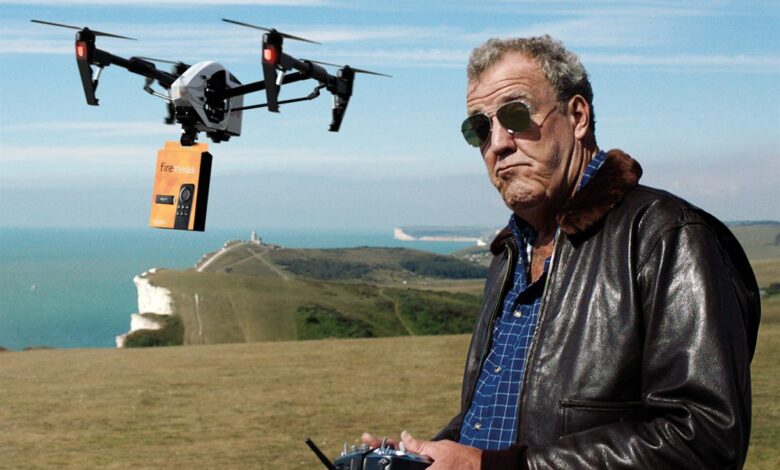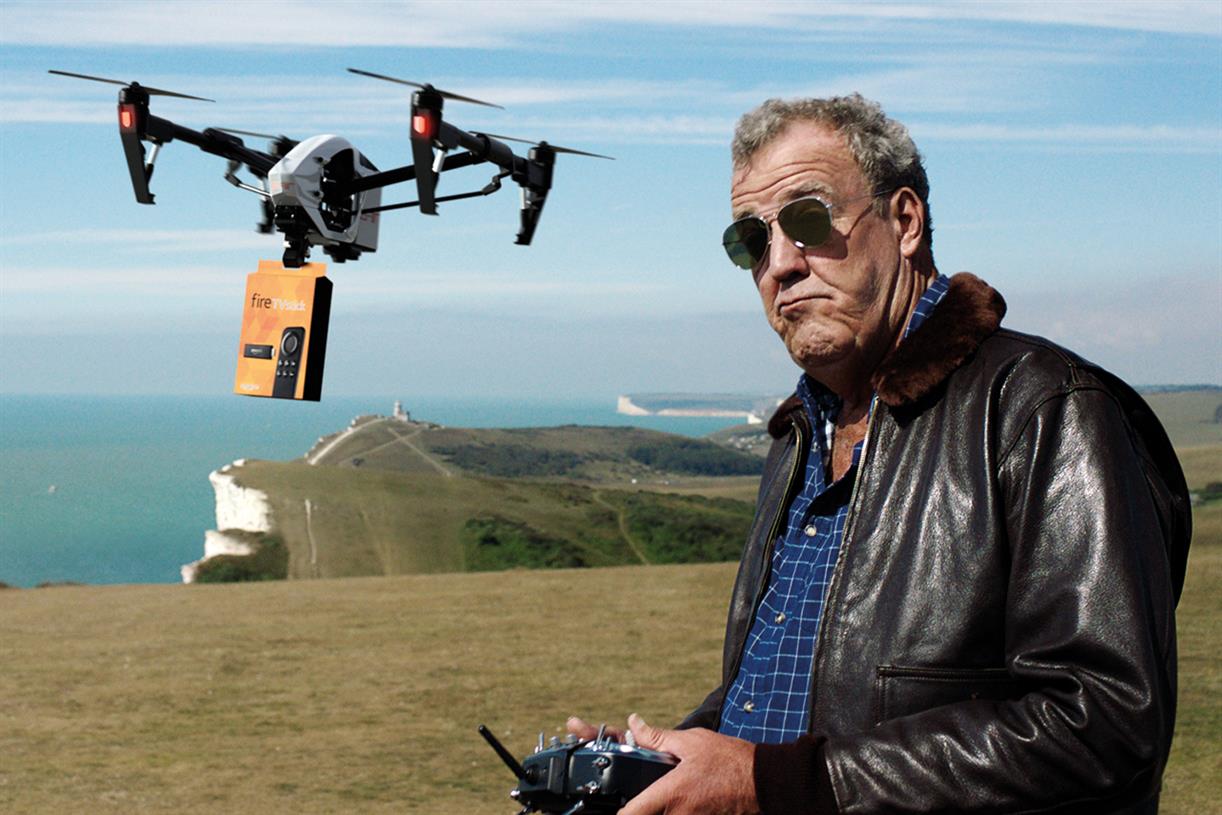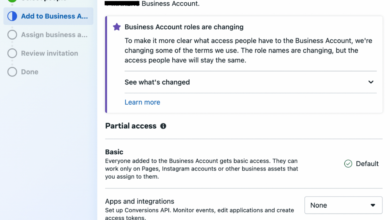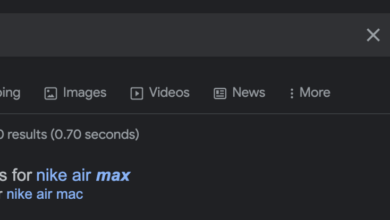
Amazon OTT Advertising A Comprehensive Guide
Amazon OTT advertising is rapidly becoming a crucial element in the digital marketing landscape. This comprehensive guide delves into the intricacies of advertising on Amazon’s streaming platforms, exploring ad formats, target audience segmentation, creative strategies, campaign measurement, budget optimization, and future trends. We’ll equip you with the knowledge needed to navigate this dynamic advertising space effectively.
From understanding the various ad formats available to mastering audience targeting strategies, this guide will provide actionable insights. We’ll also analyze the cost structure and performance metrics unique to Amazon OTT, offering valuable comparisons with other major OTT platforms.
Overview of Amazon OTT Advertising

Amazon’s OTT advertising platform offers a comprehensive suite of tools for businesses to reach viewers on various streaming services. It leverages Amazon’s vast ecosystem and data insights to target specific demographics and interests, allowing advertisers to connect with their desired audience in a highly effective manner. This platform provides a streamlined approach to video advertising, integrating seamlessly with other Amazon services for a more integrated marketing strategy.Amazon’s OTT advertising platform provides a sophisticated approach to video advertising.
It’s not just about displaying ads; it’s about integrating them into the user experience in a way that feels natural and engaging. This is achieved through a combination of targeted placements and engaging ad formats.
Ad Formats Available
Understanding the diverse ad formats available is crucial for maximizing the impact of your Amazon OTT campaign. The platform offers a variety of formats, ensuring that advertisers can choose the best fit for their specific campaign objectives. These formats range from pre-roll and mid-roll ads to more interactive options like product placements and sponsored content integrations. The platform is continually evolving to meet the ever-changing landscape of video consumption, and advertisers can anticipate new and innovative formats as technology advances.
- Pre-roll ads appear before the video content begins, allowing for a high level of visibility and brand exposure.
- Mid-roll ads are displayed within the video, offering opportunities for interruption and product integration, although their impact is potentially less impactful.
- Post-roll ads are shown after the video concludes. They offer a chance to reinforce messaging or provide additional information to viewers.
- Sponsored content allows brands to create engaging video content that aligns with the platform’s existing programming. This often includes native-style video ads that blend seamlessly with the overall video experience.
Successful Amazon OTT Campaigns
Numerous brands have successfully utilized Amazon’s OTT platform to achieve their marketing goals. For example, a major sportswear brand used Amazon OTT advertising to drive awareness for a new line of athletic apparel. They targeted viewers interested in fitness and outdoor activities, resulting in a substantial increase in website traffic and sales. This campaign effectively demonstrated the power of targeted advertising on Amazon’s platform.
Another successful campaign involved a food company promoting a new product line through interactive video ads, resulting in increased engagement and customer conversions.
Key Benefits and Advantages
Advertising on Amazon’s OTT platform offers several compelling advantages. Its extensive reach, coupled with precise targeting options, makes it an ideal choice for businesses seeking to connect with a large and engaged audience. The platform’s data-driven approach allows advertisers to track campaign performance and make necessary adjustments in real-time, optimizing their return on investment.
- Targeted advertising allows brands to reach specific demographics, interests, and behaviors. This precision helps avoid wasted ad spend and ensures maximum impact.
- Data-driven insights provide valuable information on campaign performance, enabling advertisers to refine their strategies and improve results.
- Scalability enables advertisers to easily adjust campaign budgets and reach a broader audience as needed.
- Integration with Amazon ecosystem allows for a unified marketing strategy across various Amazon services, creating a cohesive brand experience for customers.
Comparison with Other OTT Platforms
A comparative analysis highlights the key differentiators of Amazon’s OTT advertising platform.
| Feature | Amazon OTT | Platform A | Platform B |
|---|---|---|---|
| Targeting Options | Extensive, including demographics, interests, and viewing history | Good, but limited in audience segmentation | Excellent, with sophisticated behavioral targeting |
| Ad Formats | Diverse, encompassing pre-roll, mid-roll, post-roll, and sponsored content | Limited to pre-roll and mid-roll ads | Highly customizable, allowing for complex ad designs |
| Cost Structure | Flexible, with options for cost-per-view (CPV) and other models | Fixed cost per impression (CPM) model | Performance-based pricing, with focus on conversions |
Target Audience Segmentation and Targeting
Understanding your target audience is crucial for effective OTT advertising on Amazon. Precise targeting allows you to optimize ad spend and maximize return on investment (ROI) by reaching viewers most likely to engage with your products or services. This involves identifying specific demographics, behaviors, and interests to create highly-targeted ad campaigns.Effective audience segmentation and targeting on Amazon’s OTT platform is a dynamic process that demands continuous monitoring and adaptation.
By analyzing campaign performance data and making adjustments, advertisers can refine their strategies and achieve more impactful results.
Identifying the Ideal Target Audience
To effectively reach your ideal audience, meticulous audience analysis is necessary. This involves understanding the specific needs, preferences, and online behaviors of your ideal customer. Factors like age, location, income, occupation, and lifestyle play a vital role in defining the target demographic. Detailed knowledge of consumer interests and viewing habits allows for more accurate targeting, leading to higher engagement and conversion rates.
Amazon OTT advertising is booming, but understanding your return on ad spend (ROAS) is key. Knowing how to effectively measure your campaign’s profitability is crucial. For example, if you’re unsure how to calculate ROAS, check out this helpful guide on how to calculate ROAS. This will allow you to optimize your Amazon OTT ad spend and maximize your ROI.
Ultimately, mastering ROAS is essential for success in the competitive Amazon OTT advertising landscape.
Combining this knowledge with data on user behavior, such as past purchases, website visits, and online interactions, allows advertisers to create personalized experiences and ads.
Targeting Options on Amazon OTT
Amazon’s OTT platform offers a suite of targeting options. These options are designed to help advertisers precisely reach the right viewers for their specific needs. Utilizing a combination of these options yields the most impactful results. This includes demographic targeting, which enables focusing on specific age groups, genders, and locations. Behavioral targeting, on the other hand, enables advertisers to focus on viewers based on their online activities, such as past purchases or browsing history.
Amazon OTT advertising is a hot topic right now, and figuring out the best strategies is key. One key player in this space is Marc Fleishhacker, CMO of Bow Wow Labs, marc fleishhacker cmo bow wow labs , who’s bringing a fresh perspective to how brands can connect with audiences on these platforms. His insights offer a valuable lens for understanding the evolving landscape of Amazon OTT advertising.
Interest-based targeting allows focusing on viewers with particular interests, such as specific genres of movies or shows. Custom audiences allow advertisers to use their own customer data to target specific users. Combining these options allows advertisers to create highly-specific and effective ad campaigns.
Demographic, Behavioral, and Interest-Based Targeting
Demographic targeting focuses on specific characteristics of viewers, such as age, gender, and location. Behavioral targeting uses viewer actions, such as past purchases or website visits, to personalize the experience. Interest-based targeting allows advertisers to target viewers with specific interests, like specific movie genres or TV shows. Each targeting method can be combined to yield comprehensive targeting strategies.
For instance, an advertiser selling hiking gear might target viewers interested in outdoor adventures in the age range of 25-45, located in mountainous regions. By using a combination of demographic, behavioral, and interest-based targeting, the advertiser can reach the ideal customer base.
Effectiveness of Different Targeting Strategies
The effectiveness of different targeting strategies depends on various factors. A strategy that works well for one product or service might not be as effective for another. The key is to experiment with different combinations of targeting options to identify the most effective approach. Detailed analysis of campaign performance data is critical to identify successful strategies and adjust those that aren’t performing as expected.
Testing various combinations and adjusting based on results is essential for achieving optimal outcomes.
Audience Segmentation and Campaign Examples
| Audience Segment | Interests | Ad Campaign Example |
|---|---|---|
| Millennial Movie Buffs (25-40) | Action, Sci-Fi, Blockbusters, Streaming Services | Promoting a new sci-fi film on Prime Video, featuring a captivating trailer. |
| Family Movie Enthusiasts (35-55) | Animated Films, Family Comedies, Educational Content | Highlighting a family-friendly animated film, emphasizing the engaging story and appealing characters. |
| Tech-Savvy Gamers (18-35) | Esports, Video Games, Technology News | Promoting a new video game with in-game screenshots and gameplay highlights. |
| Foodie Travelers (25-50) | Culinary Experiences, Travel Documentaries, Restaurant Reviews | Promoting a cooking show or a travel guide on Amazon Prime Video, featuring appealing food and travel visuals. |
Ad Creative Strategies for Amazon OTT
Amazon OTT advertising offers a powerful platform for brands to connect with audiences in a dynamic and engaging way. Crafting effective ad creatives is crucial for capturing attention and driving desired outcomes. A well-designed ad can effectively communicate a brand’s message, build brand awareness, and ultimately drive conversions.Ad creatives should be tailored to the specific format and environment of Amazon OTT.
Understanding the platform’s strengths and audience preferences is key to maximizing the impact of your ad campaigns. A compelling narrative and visually engaging elements are paramount for making a lasting impression.
Amazon OTT advertising is a powerful tool, but figuring out the best strategies can be tricky. One way to streamline your approach might be to look at Facebook’s automated ad solutions. Facebook automated ads could offer a useful framework for testing and optimizing different ad campaigns, which can then be applied to your Amazon OTT campaigns.
Ultimately, a well-rounded understanding of various ad platforms is key for success in the Amazon OTT space.
Compelling Ad Creative Examples, Amazon ott advertising
Effective ad creatives need to be more than just static images or text; they should tell a story. A good example would be a short, dynamic video showcasing a product’s features and benefits, or an animated sequence highlighting a brand’s personality and values. These visual elements should be seamlessly integrated with the narrative to create a cohesive and memorable experience.
Consider using product demos, customer testimonials, or behind-the-scenes footage to build trust and credibility.
Video Ad Storytelling and Engaging Visuals
The importance of compelling video storytelling in ad creatives cannot be overstated. Amazon OTT viewers expect a high level of visual appeal and are likely to be less receptive to static or poorly produced content. Visual elements, such as high-quality graphics, animation, and dynamic transitions, can dramatically enhance viewer engagement. Using music, sound effects, and voiceovers can further immerse viewers in the narrative and reinforce the message.
Best Practices for Visually Appealing and Informative Ads
Visual appeal is paramount in creating informative ads. High-quality video production, clear audio, and engaging visuals are essential for capturing attention. Keep the ad concise, focusing on key benefits and value propositions. Use clear and concise text overlays to convey information without overwhelming the viewer. Ensure the ad’s length is optimized for the chosen format, balancing the need to communicate information with the need to maintain viewer interest.
Factors Influencing Ad Creative Success
Several factors influence the effectiveness of Amazon OTT ad creatives. Target audience understanding is critical, as the creative should resonate with the specific demographics and interests of the intended viewers. The ad’s relevance to the content surrounding it is also important, ensuring it seamlessly integrates into the viewer’s experience. Measuring and analyzing campaign performance metrics is essential to understanding what resonates and adjusting strategies for improvement.
A/B testing different creative elements can help optimize performance and maximize impact.
Dos and Don’ts for Effective Amazon OTT Ad Creatives
- Do focus on concise messaging, highlighting key benefits and value propositions.
- Do use high-quality video production and engaging visuals.
- Do maintain a consistent brand voice and visual identity throughout the campaign.
- Do tailor the creative to the specific Amazon OTT ad format.
- Do prioritize clear and concise calls to action.
- Don’t use overly complex or confusing visuals.
- Don’t overwhelm the viewer with excessive information.
- Don’t ignore the importance of sound design.
- Don’t neglect mobile optimization.
- Don’t use generic or irrelevant messaging.
Ad Formats (Examples)
- Pre-roll: A short video ad that plays before the start of a video content. A good pre-roll ad will grab the viewer’s attention immediately and clearly introduce the product.
- Mid-roll: An ad that plays during the middle of a video content. Mid-roll ads are typically longer than pre-roll ads and have more opportunity to convey information.
- Post-roll: A short video ad that plays after the video content has ended. Post-roll ads are often used to provide additional information or to drive viewers to a landing page.
Measurement and Analytics of Amazon OTT Campaigns

Understanding the performance of your Amazon OTT advertising campaigns is crucial for optimization and return on investment. Detailed tracking and analysis allow you to identify what resonates with your target audience and adjust your strategies accordingly. This data-driven approach empowers you to make informed decisions and maximize the impact of your campaigns.
Key Performance Indicators (KPIs) for Amazon OTT
Amazon OTT advertising provides a wealth of data to measure campaign effectiveness. Crucial metrics include impressions, clicks, and conversions, each providing valuable insights into audience engagement and campaign performance. A comprehensive analysis of these metrics is essential for understanding the success of your advertising efforts.
Tracking and Analyzing Campaign Data
Tracking campaign data involves meticulous monitoring of key metrics, such as impressions, clicks, and conversions. Data analysis tools provided by Amazon help you understand campaign performance and identify areas for improvement. This data-driven approach enables you to optimize ad creatives, target audiences, and bidding strategies for maximum impact.
Importance of Conversion Tracking
Conversion tracking is paramount for evaluating the return on investment (ROI) of your Amazon OTT campaigns. By tracking conversions, you can determine the effectiveness of your advertising in driving desired actions, such as purchases or sign-ups. This allows you to optimize your campaigns for better results and ultimately achieve your business objectives.
Interpreting Key Metrics
Interpreting impressions, clicks, and conversions requires understanding their individual significance and how they relate to overall campaign performance. Impressions represent the number of times your ad was displayed, clicks reflect user engagement with your ad, and conversions signify the desired outcome from the user interaction.
Table: Significance of Campaign Metrics
| Metric | Explanation | Significance |
|---|---|---|
| Impressions | The number of times your ad was displayed to users. | Indicates the reach of your campaign and visibility to the target audience. High impressions suggest broader reach, while lower impressions might indicate a need to adjust targeting or ad creatives. |
| Clicks | The number of times users clicked on your ad. | Indicates user engagement with your ad. A high click-through rate (CTR) suggests compelling ad creatives and relevant targeting. |
| Conversions | The number of desired actions taken by users after clicking on your ad (e.g., purchases, sign-ups). | Measures the effectiveness of your campaign in achieving its objectives. High conversion rates indicate a successful campaign driving desired user actions. |
| Cost Per Conversion (CPC) | The cost incurred for each conversion. | Crucial for evaluating the profitability of your campaign. A low CPC indicates a cost-effective campaign. |
Cost and Budget Optimization Strategies for Amazon OTT
Amazon OTT advertising offers a powerful way to reach targeted audiences, but effective budget management is crucial for maximizing return on investment (ROI). A well-defined budget strategy, combined with continuous performance analysis and optimization, can significantly improve the efficiency of your campaigns. This article explores strategies for setting, managing, and optimizing your Amazon OTT advertising budget.Effective budget management involves understanding your campaign goals and target audience to establish realistic yet ambitious budget targets.
Careful consideration of ad spend, combined with data-driven analysis, allows for adjustments to maximize ROI and minimize wasted ad spend.
Setting and Managing Advertising Budgets
Budgeting for Amazon OTT campaigns requires a clear understanding of your objectives and target audience. This understanding enables the development of a comprehensive strategy, including allocating funds to different campaign elements and monitoring performance against established metrics. Defining specific KPIs and their associated targets will enable a measurable approach to campaign optimization.
Optimizing Ad Spend and Achieving Maximum ROI
A key component of budget optimization involves scrutinizing ad performance data. Detailed analytics allow for identification of high-performing and underperforming ad elements, enabling informed adjustments to maximize ROI. A data-driven approach is essential, and regular review of performance indicators is key to continuous improvement.
Analyzing Campaign Performance and Adjusting the Budget
Regular performance analysis of Amazon OTT campaigns is essential for budget optimization. This involves tracking key metrics like impressions, clicks, conversions, and cost per acquisition (CPA). Tracking these metrics allows for the identification of areas requiring adjustments to improve performance. By regularly evaluating campaign performance against predefined KPIs, marketers can identify areas for improvement and make informed decisions to optimize their budget allocation.
Case Studies of Successful Budget Optimization Strategies
One successful example involved a company targeting a specific demographic through Amazon OTT ads. By focusing on high-performing video formats and optimizing ad copy, they reduced their cost per acquisition by 20%. Another company saw a 15% increase in conversions by refining their targeting criteria and adjusting ad spend based on real-time performance data. These strategies underscore the importance of data-driven decision-making in optimizing Amazon OTT campaigns.
Identifying Underperforming Ad Campaigns and Optimizing Them
Regular review of campaign performance is critical to identify underperforming ad campaigns. Underperforming campaigns can be identified by analyzing key metrics such as low click-through rates, high cost per acquisition, and low conversion rates. In-depth analysis of the specific ad elements within underperforming campaigns is necessary to pinpoint areas requiring optimization. By understanding the root cause of poor performance, companies can adjust creative elements, targeting parameters, and budget allocation to maximize ROI.
This could involve A/B testing different ad creatives, refining targeting parameters, or adjusting bidding strategies.
Future Trends and Predictions for Amazon OTT Advertising
Amazon OTT advertising is poised for significant growth, driven by the platform’s vast user base and increasing integration with other Amazon services. Understanding the emerging trends and potential impacts of new technologies is crucial for advertisers to effectively leverage this dynamic space. The evolution of consumer behavior and emerging technologies will shape the future of Amazon OTT advertising strategies, creating both opportunities and challenges.
Emerging Trends in Amazon OTT Advertising
The Amazon OTT ecosystem is constantly evolving, with new features and integrations emerging frequently. This dynamism presents both opportunities and challenges for advertisers. Key trends include the increasing integration of Amazon’s various services, the rise of personalized recommendations, and the exploration of interactive advertising formats.
- Enhanced Integration with Amazon Services: The seamless integration of Amazon’s various services, such as Prime Video, shopping, and Alexa, is transforming how users interact with the platform. Advertisers can leverage this integration to create more contextual and engaging ads, potentially influencing purchasing decisions directly within the streaming experience. For example, an ad for a new smartphone could seamlessly transition to a product page on Amazon.com during a video break, enabling immediate purchasing.
- Rise of Personalized Recommendations: Amazon’s sophisticated recommendation engine, deeply embedded in the OTT experience, provides unparalleled targeting capabilities. Advertisers can utilize these personalized recommendations to deliver highly relevant ads, improving engagement and conversion rates. A viewer watching a documentary about space travel might see targeted ads for space-themed merchandise or related products shortly afterward.
- Interactive Advertising Formats: Amazon is experimenting with interactive ad formats, potentially offering greater engagement and user interaction. These innovative formats could include quizzes, polls, or games integrated directly into the video viewing experience. This allows for more dynamic and user-driven interactions, increasing ad memorability.
Impact of New Technologies on Future Strategies
The integration of new technologies, such as artificial intelligence (AI) and machine learning (ML), will profoundly affect future advertising strategies. AI can personalize ads, optimize campaigns, and predict user behavior with increasing accuracy. This enables more targeted and effective advertising campaigns.
- AI-Powered Personalization: AI algorithms can analyze vast amounts of user data to personalize ads to individual preferences, viewing history, and purchase patterns. This level of personalization significantly improves ad relevance and effectiveness. For example, an AI could analyze a viewer’s preferences for specific genres and recommend relevant ads for products or services within that category.
- Machine Learning for Campaign Optimization: ML algorithms can analyze campaign performance in real-time, allowing for continuous optimization of ad spend and targeting strategies. This adaptability is crucial in the dynamic OTT environment.
Innovative Approaches in Amazon OTT Advertising
Advertisers are exploring innovative approaches to engage audiences within the Amazon OTT ecosystem. Examples include creating branded content, integrating product placements, and developing interactive experiences.
- Branded Content Integration: Brands are increasingly producing original content that aligns with their brand message, seamlessly integrating it within the Amazon OTT platform. This strategy builds brand awareness and strengthens viewer engagement.
- Product Placement Strategies: Strategic product placements within Amazon Originals or user-generated content can organically showcase products without disrupting the viewing experience. This method blends entertainment with product discovery.
- Interactive Ad Experiences: Advertisers are exploring innovative interactive ad formats to engage viewers. These formats could include polls, quizzes, or games embedded directly within the video playback. This could provide a richer, more interactive user experience, enhancing brand recall.
Potential Challenges and Opportunities for Amazon OTT Advertisers
While opportunities abound, Amazon OTT advertising presents certain challenges. Understanding the complexities of the platform and adapting to evolving consumer preferences are essential for success.
- Competition and Saturation: The growing number of advertisers vying for space on Amazon OTT necessitates a competitive edge in terms of targeting and creativity.
- Evolving Consumer Preferences: Understanding and adapting to the constantly shifting preferences of Amazon OTT viewers is crucial for campaign success.
Evolving Consumer Behaviors Affecting Advertising Strategies
Consumer behavior is rapidly changing, influencing how advertisers engage with audiences on Amazon OTT. The rise of on-demand viewing and personalized recommendations is shaping the way viewers interact with content and ads.
- On-Demand Viewing Habits: The increasing prevalence of on-demand content consumption requires advertisers to optimize their campaigns for engagement with viewers on their own schedules. This implies a need for more dynamic and adaptable ad formats.
- Rise of Personalized Recommendations: Consumers are accustomed to personalized recommendations across various platforms, including Amazon OTT. Advertisers need to integrate these recommendations into their strategies to maintain relevance and engagement.
Final Summary: Amazon Ott Advertising
In conclusion, Amazon OTT advertising presents a unique opportunity for brands to connect with a highly engaged audience. By strategically utilizing the platform’s capabilities, advertisers can optimize their campaigns, enhance ROI, and gain valuable insights into evolving consumer behaviors. This guide serves as a starting point for navigating this ever-evolving advertising landscape. Mastering the strategies discussed here will empower you to maximize your advertising impact on Amazon’s OTT platforms.




